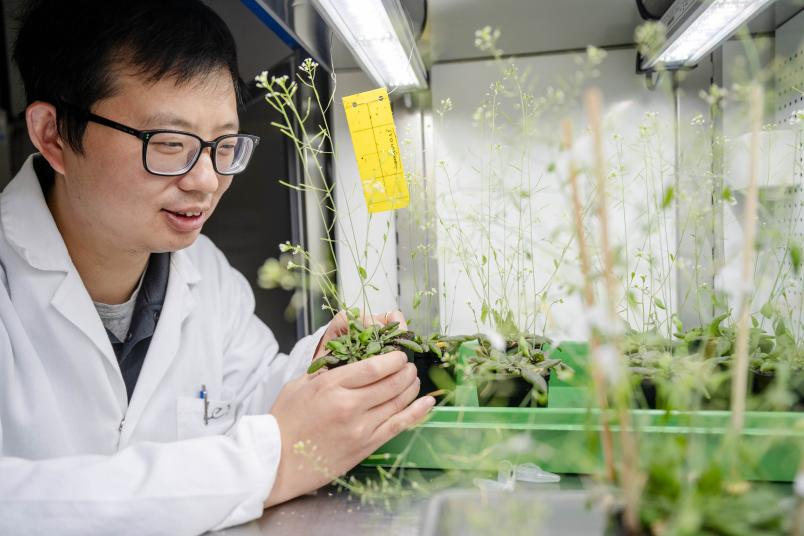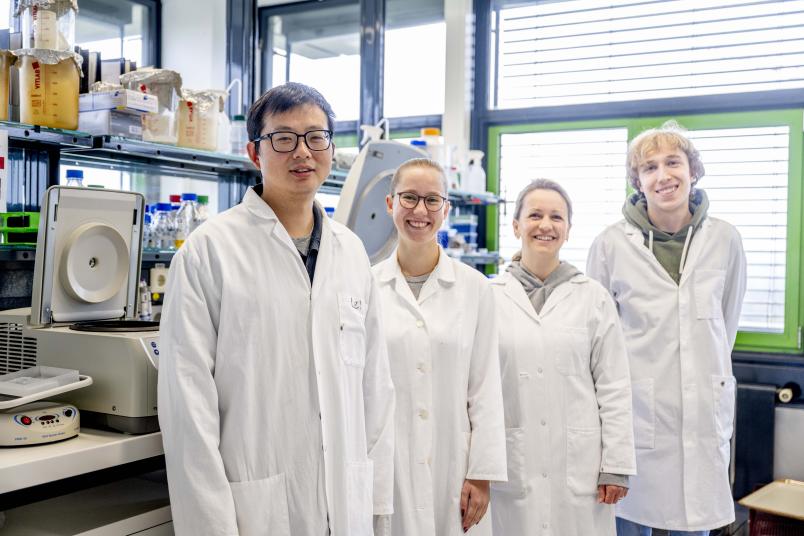
Lei Zhang works with the plant Arabidopsis.
Biology
Old Puzzle around Protein Distribution in Plant Cells Solved
Researchers in Bochum have discovered a control mechanism that may also operate beyond plants.
How lipids in the membrane of the endoplasmic reticulum of plant cells interact with proteins to organize the first step of protein transport has long been an unsolved mystery. A research team at Ruhr University Bochum, Germany, led by Professor Christopher Grefen, has uncovered how a lipid switch in plant cells directs proteins to the endoplasmic reticulum (ER) – the gateway to the cell’s secretory pathway. The study was published in the journal Proceedings of the National Academy of Sciences (PNAS) on October 8, 2025.
Proteins must enter the membrane
Proteins carrying a “tail anchor” must be inserted into the ER membrane before they can fulfill their cellular roles. In plants, this task is carried out by the Guided Entry of Tail-Anchored proteins (GET) pathway. Yet, how the GET receptors are regulated has remained unclear – until now.
The researchers discovered that the lipid phosphatidylinositol-4-phosphate (PI4P) – usually scarce in the ER – acts as a transient recruiter. PI4P draws the two GET receptors, AtGET1 and AtGET2, into close proximity within the ER membrane. “This early clustering is crucial, but it becomes functional only after the enzyme RHD4 removes a phosphate group from PI4P, converting it into phosphatidylinositol (PI),” explains Grefen. This step locks AtGET1 and AtGET2 into a stable complex, ensuring the proper insertion of tail-anchored proteins and supporting root hair growth in plants.

The botany team is proud of the paper in PNAS.
A molecular magnet
“PI4P acts like a molecular magnet that brings AtGET1 and AtGET2 together, and RHD4 then locks them into a stable partnership,” says Dr. Lei Zhang, first and co-corresponding author of the study. “This PI4P–phosphatase module reveals a new concept of how cells coordinate protein trafficking with membrane composition.”
The findings highlight the dynamic interplay between lipids and proteins in shaping the organization of cellular membranes. Beyond plant biology, this phosphoinositide switch may represent a general mechanism by which cells regulate protein transport.